Reviewed: five language-learning apps for your smartphone
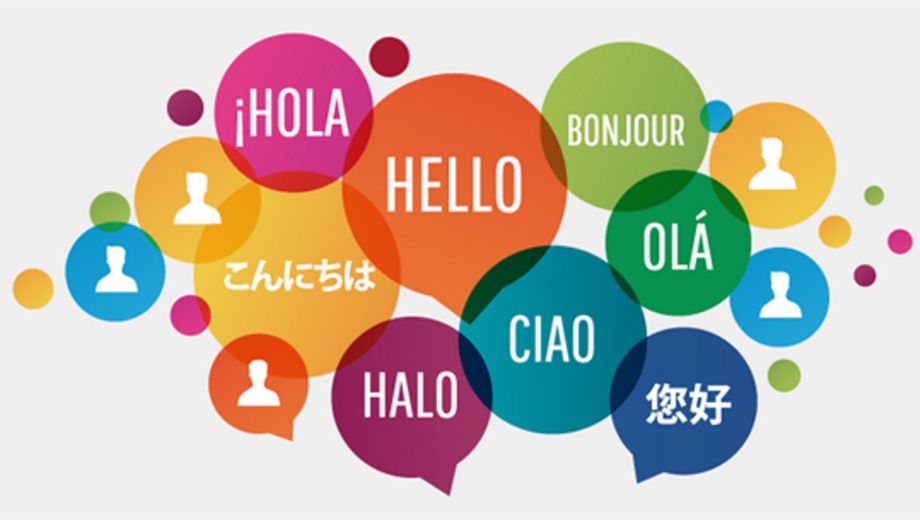
If you’re not careful about your pronunciation, it’s pretty easy to tell someone in France that you’re pregnant instead of saying you’re full. In Israel, you might ask someone to buy their daughter instead of buying a slice of bread. Saying you’re 'cold' in German? It sounds a lot like saying you’re dead.
Even those poor conjugation skills make all the difference between trying to say “Let’s get on with it” and “Let’s get it on!”
Living like a local is all the rage for travelers, but speaking the local language is not always so easy.
Even having a few basic phrases can go a long way, depending on where you are.
Last winter, when I found myself in rural Thailand, I had few words in my repertoire than hello (“sa-wa-dee-kah”) and thank you (“kap koon kah”). Despite that paltry showing, I was surprised at how genuinely locals seemed to appreciate the effort.
On a solo trip in Brazil, I managed a half-hour conversation with a cab driver using nothing more than my fluent Spanish.
With middling Hebrew (which has much in common with Arabic), I was able to learn about ongoing Eid Al-Adha traditions when I arrived in Morocco last September.
Thanks to a rise in mobile apps, it’s easier than ever to pick up a new language – or at least get a grasp on the basics before your next trip. And thanks to push notifications that keep you coming back, gamified motivational techniques, and bots that help you practice without imposing judgment, they’re likely to get you speaking conversationally – and gaffe free – before you hop on the plane.
Here are the best ones to consider, depending on your personal learning style and ongoing goals.
For short attention Spans: drops
Why we like it: No reading. No typing. Just five minutes a day. That’s how Drops promises to get you to learn one of 19 languages—spanning from French and Spanish to Korean and Arabic. (Esperanto, comically, is also included.)
Lessons walk you through 120 word buckets covering food, drinks, numbers, and hotel terms. And instead of showing you flash cards with cheesy stock photos, the app focuses on clean illustrations, all in white, set against solid-colored backdrops.
Whether you’re matching pictures to their translations, unscrambling letters to practice spelling, or swiping across a grid of letters to unearth the word that matches the picture, the exercises feel like quick games rather than classroom worksheets.
The caveat: Drops places a heavy emphasis on building vocabulary through nouns, which means you won’t get much in the way of grammar, usage, and conjugations. You won’t be quizzed on speaking or pronunciation, either.
And though you can purchase unlimited time for as little as US$48 per year, five-minute blocks mean that you learn at a relatively slow pace. That’s great if that’s all the time you have to spare, anyway – not so great if you’re actively trying to cram before a trip.
To sound like a local: Busuu
Why we like it: Busuu offers the language-learning equivalent of pen pals – if you’re studying French, you can have your speaking exercises evaluated by Busuu students in France, so long as you return the favor and grade someone else’s homework in your native tongue. (With 70 million users around the world, it’s not a stretch to find a study partner you’ll love.)
To extend the theme, lessons in 12 languages include insightful tips on local usage: For instance, this is the only app I tried that told me that French natives are more likely to use the plural “ons” instead of “nous” when conjugating “we” verbs.
The caveat: Most of the app’s best features, including unlimited exchanges with foreign students, are behind a paywall. But the plans are highly affordable: one month costs US$8 and a year goes for US$45, less than a dollar per week.
For a long-term commitment: Duolingo
Why we like it: While all of these apps are free to download, Duolingo is the only one without a premium subscription model, which means you’re free to learn 23 languages at your own pace – even if that means spending several hours a day on your Italian.
It’s also holistic in its teaching style: You learn vocabulary, grammar, and usage simultaneously, with illustrated flashcards and fill-in-the-blank exercises that really make you think.
A new feature are chat bots, which stretch your skills. They might walk you through a conversation with a chef who’s deciding what to eat, or a model who wants help picking an outfit. Whether you need to refer to word cues at the bottom of the screen or not, they force you to use contextual clues to learn new words.
Elsewhere in the app, game-like elements are a valuable motivator. You lose points for wrong answers and gain them back by practicing your rustiest words. And sliding scales indicate whether you’ve fully mastered a lesson or are due for a refresh.
The caveat: If learning to speak is your priority, you’ll find the spelling exercises tedious. (They’re especially frustrating with romance languages that require lots of accent marks.)
Pronunciation exercises are also too forgiving – you can be marked correct even if you completely botch your answers. And for travelers, vocabulary doesn’t skew towards the practical – you’re likely to learn how to conjugate “I read, you read, she reads” or “the cat is black” before learning to say “please” and “thank you.”
For a quick fix: Memrise
Why we like it: Beneath a kitschy narrative concept about unlocking the outer cosmos, Memrise shows a real concern for both fun and practicality.
A highly customizable format lets you decide how many words you can absorb in a single lesson and positive reinforcement abounds; as you progress in your learning, you earn points for correct answers, graduate through a silly rank system, collect badges, and watch your skills grow from seedlings to flowers.
Plus, the app favors everyday conversational skills over technical exercises – my very first lesson in French covered the phrase “bottoms up!” Also fun: Lessons in 18 languages include endearing video clips from native speakers so you can hear different voices and attune your ear to the way real people (not overly articulate teachers) speak on a day-to-day basis.
The caveat: The app offers little opportunity to practice your pronunciation, and it constantly nags you to upgrade to the “pro” version, which includes “speed review” games and extended lessons – at a cost of US$60 per year.
The closest thing to a classroom education: Mondly
Why we like it: It’s not beautifully designed. And it’s not gamified. But what Mondly lacks in charm, it makes up for in comprehensiveness and rigor.
Basic lessons walk you through the nuts and bolts of conversational language (“How are you?” and “My name is …”); they get progressively difficult and more involved, spending roughly two hours of instruction on each of 20 topics (animals, travel, shopping, for instance).
As in school, you get as much out of Mondly as you’re willing to put into it: New words come with conjugation charts you can study, and daily lessons cover bonus materials and unlock weekly quizzes. It adds up to the most fulsome app-learning experience, if not the most riveting one.
The caveat: Like some other apps, Mondly keeps the majority of its lessons behind a paywall. (Plans start from US$3.99 per month.) And its uninspired interface can sometimes feel like a chore. But with 32 languages to choose among – including such hard-to-find options as Persian and Afrikaans – it may be worth it.
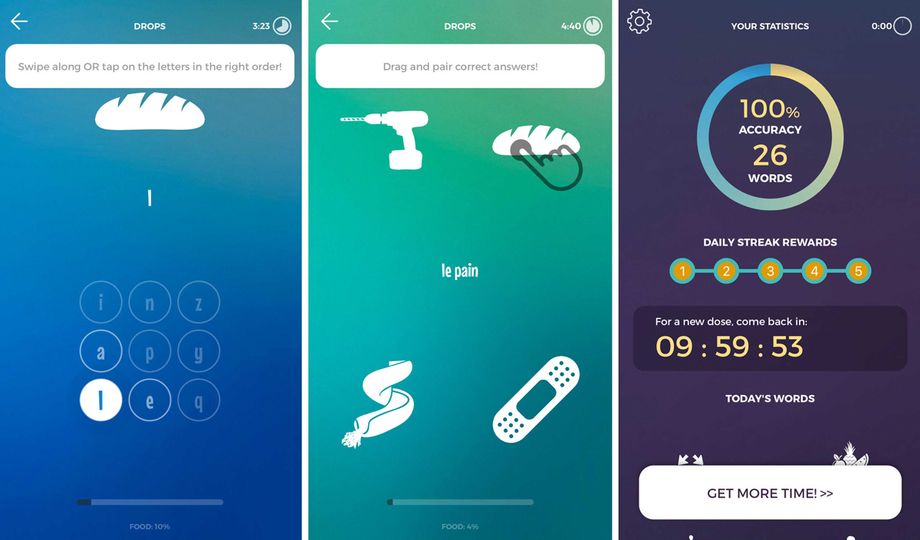
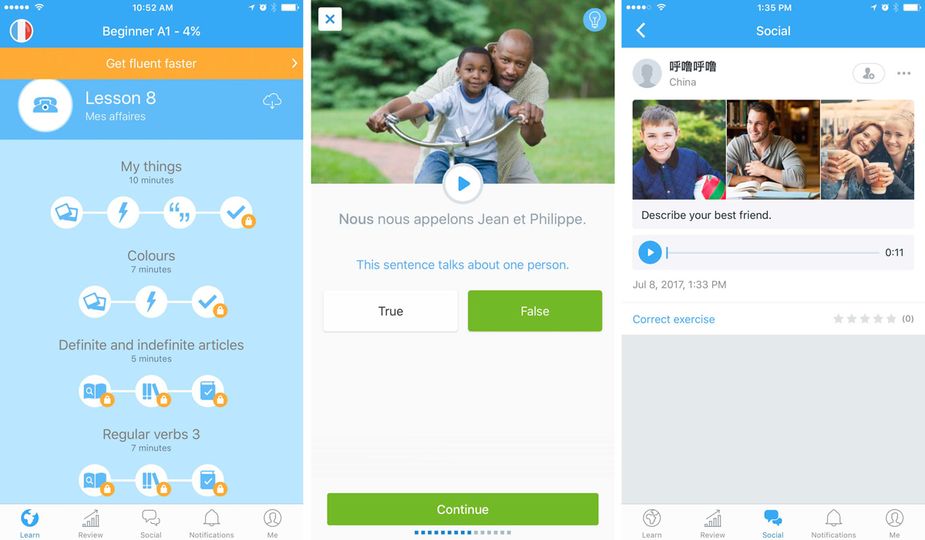
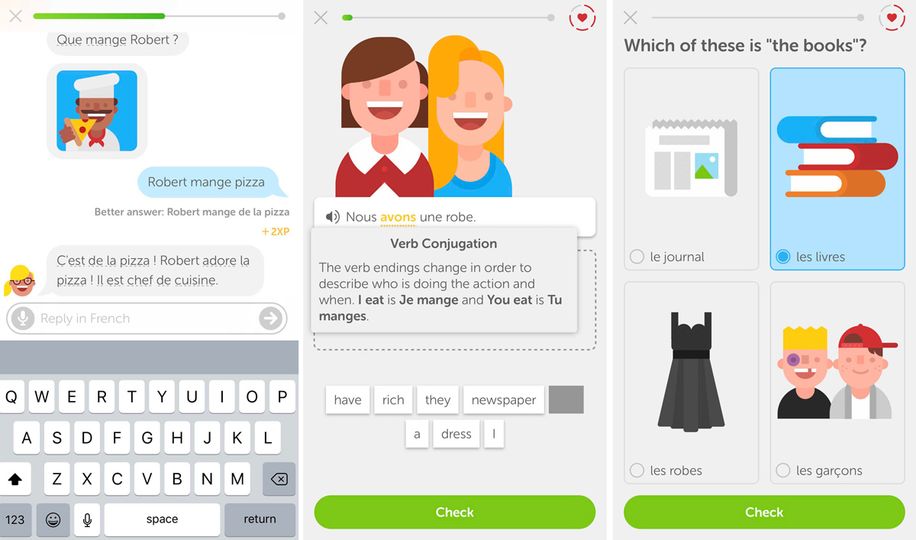
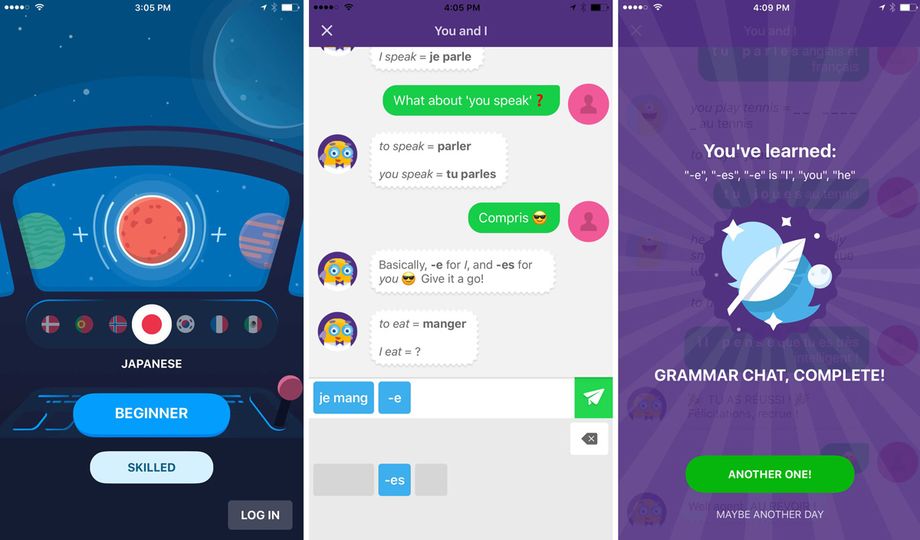

Qantas - Qantas Frequent Flyer
10 May 2014
Total posts 112
Have been using Duolingo for almost a year and only spend about five to ten minutes a day (I know I should do more) but my Spanish reading and comprehension has improved markedly, spoken is still not so good but that is down to my lack of application, not the programs.
Qantas - Qantas Frequent Flyer
26 Feb 2017
Total posts 3
These are ok for learning a few words/phrases to get by - used a couple of them myself. But if you're a frequent traveller to Asia, Europe or LatAm, then probably worth the investment for a one-off course, either online or in person at somewhere like Berlitz, Alliance Francais, etc. Obviously more expensive, but definitely worth it. I did this for business purposes - made a huge difference, although I enjoy getting a little practise with the apps.
Qantas - Qantas Frequent Flyer
19 Jul 2017
Total posts 6
I'm about 2/3rds the way through Duolingo's Portuguese course and can get by reasonably well in Brazil after less than six months of a few minutes a day. Unfortunately, Duo is currently lacking Chinese. I've just started working through HelloChinese, and it's quite Duolingo-like in it's structure.
Hi Guest, join in the discussion on Reviewed: five language-learning apps for your smartphone